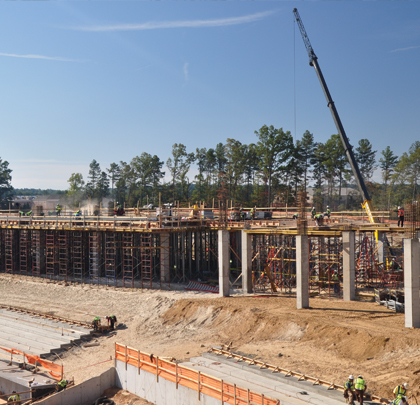If there’s one word that captures the essence of what is occurring in business today, it’s “change.” It’s most definitely “business NOT as usual.” No industry is exempt; there are no sacred cows. Even the most venerable and conservative institutions have had to deal with the changing business climate and make significant changes in their businesses to be able to compete in today’s new reality.
THE CHALLENGE OF CHANGE
No one likes the changes that began to occur in 2008—least of all construction contractors—especially when a negative turn of events dramatically impacted their bottom line. The difficulty was even pronounced after an era of relatively solid growth and strong revenues that preceded this era.
While it may not be easy, contractors are dealing with it. Their survival instincts have kicked in. They have chosen to meet their challenges head on, and assessed what they can control and what they cannot. By adopting this mindset and now that the economy is slowing improving, they are in a better position to make decisions that will help their businesses grow and prosper.
MAKING CHOICES FOR BUSINESS
Like every business, contractors must change the way they do business. What worked in the past will not necessarily work in the new business environment. Smart decisions will have to be made. New ways of doing business will have to be uncovered, higher levels of performance will be required in every aspect of the customer experience. Choices for the required organizational changes will have to be made.
MANAGING CHANGE EFFECTIVELY
Once decisions are made on smart competitive strategies, methods to drive higher performance, and provide the highest levels of client service, the next challenge is implementing whatever changes they want to make throughout the organization. Just like ensuring quality workmanship, change implementation is a key responsibility for management. If changes are not managed correctly, the result can be disgruntled workers and average customer service. No contracting business can afford these conditions.
7 WAYS TO IMPLEMENT CHANGE SUCCESSFULLY
- Communicate to your staff that customers are more demanding than ever. They have higher expectations, are more cost-conscious and service savvy. They will only do business with a contractor that has a reputation for quality in every aspect of doing business. Communication is always important, but it is critical in a changing business environment. Make every effort to ensure that all employees understand what’s occurring in the marketplace. Talk to them about your competitive strategy and the changes you want to make. Make them a part of it so that they can assume a degree of ownership in the situation. Ask for their ideas and input. Communicate your goals and direction to every level of the company using sincere language.
- Establish an atmosphere and culture of open communication. Open communication is important in every organization at all times. It becomes even more critical when implementing change. As you begin planning organizational changes, consider developing a concurrent communication strategy to remind people about the nature of the changes, the expectations, and the progress that is being made. In today’s changing business environment, employees quickly lose their motivation if they are not involved and kept informed of changes going on around them. Establish a culture of open communication, where people feel free to speak up without fear of losing their jobs. Consistently ask for ideas and suggestions from employees. Encourage them to speak openly about every single thing that might hold your organization back.
- Introduce change gradually whenever possible. While you may not genuinely have the time to move slowly, changing a situation too quickly will create chaos for your organization. You may feel your people are ready to respond to any changes you will make, but they may not be able to absorb the changes as quickly as you like. It takes time to assimilate new information, learn new systems or procedures, and to do things in a new and different way.
- Be in tune to difficulties some may be experiencing. Recognize that change affects each individual differently. Some people are more adaptable than others. Many top performers will roll up their sleeves to make things work—moving out of their comfort zone instantly. Others may be completely overwhelmed. Let them know you understand the challenges they are facing and that you are there to help them through it.
- Manage resistance. Human beings are basically creatures of habit. They like doing things the same way. Doing things differently takes them out of their comfort zones. Some people may resist and hold others back, and, consequently, your contractor business. Talk to any person who comes to work with a chip on his or her shoulder.
- Be a role model. It is up to you as their leader to maintain employee morale through change. Set the tone; be a role model and be an example for others to follow. Keep the spirit alive by setting that example.
- Take the time to train. To achieve success in today’s fiercely competitive construction climate, training must be a top priority. The time and money you invest in training will eventually pay off in increased profits and service quality. Make training fun and alleviate job pressure. What is occurring in business today is serious, but training doesn’t have to be that serious.
THE BOTTOM LINE
Unfortunately, we sometimes (even unknowingly) put up our own roadblocks to success. We wait for things to turn around, complain loudly, and refuse to take on the challenge. We simply can’t adapt. We don’t know what to do. The truth is that the business environment has changed, it’s business not as usual. Change your company to be the best contractor business you can possibly be. ■
About The Author:
Christine Corelli is a columnist, consultant, and author. For more information, call 847.581.9968, or visit www.christinespeaks.com.
_________________________________________________________________________
Modern Contractor Solutions, January 2014
Did you enjoy this article?
Subscribe to the FREE Digital Edition of Modern Contractor Solutions magazine.



